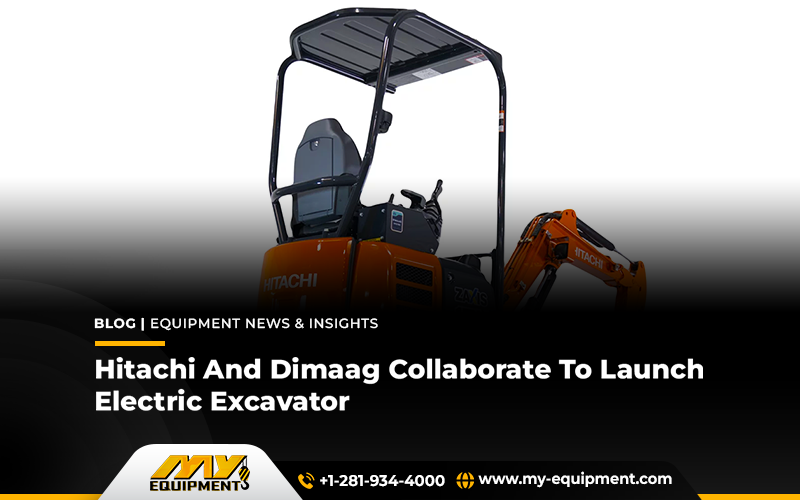Hitachi Construction Machinery is a dedicated organization that never fails to put sustainability and environmental protection before its profits. This industry giant is well known for making all the efforts possible to bring more innovation and advancement in greener construction technologies.
Extending this effort, Hitachi has recently collaborated with another market player, Dimaag, to launch an electric excavator in the North American market.
This new 1.7-ton electric excavator, which is scheduled to make its premiere at Bauma 2025 and deploy in Europe by 2027, is a significant step toward satisfying the increasing demand for construction equipment with zero emissions.
Will this excavator be the substitute for a compact excavator?
Compact electric machinery is in high demand for projects in metropolitan areas and environmentally sensitive places as the construction industry moves more and more toward sustainable solutions.
With a focus on low emissions and effective operation, Hitachi’s new 1.7-ton electric wheel excavator for sale seeks to satisfy these demands and complement the company’s larger electric models that are currently available in Europe.
Demag ENCORE tech powers the electric excavator
To innovate the product more, Dimag to launch the latest tech to provide enough power. Dimaag’s ENCORE (Electric No Compromise Off-Road Ecosystem) technology, which consists of interchangeable battery modules, thermal management systems, and an extensive power management platform, is the foundation of this new model.
This technology is made to easily integrate with off-road electric machinery, guaranteeing versatility and long-term performance on construction sites.
The vice president of engineering at Dimaag, Ian Wright, highlighted that ENCORE allows for “no compromise on safety, all-day performance, and affordability,” meeting the needs of the construction industry for dependable and strong technology without compromising sustainability.
Zero Emission goal is on top of the list
All the sustainable and greener construction projects aim to achieve the zero-emission goal as these emissions are the major contributor to the environmental pollution.
Kazunori Nakamura, vice president and executive officer at Hitachi says that the collaboration is a calculated move to increase the use of electric solutions in the building industry.
This partnership advances Hitachi’s objective of using adaptable, effective equipment to increase electrification at building sites.
Hitachi is dedicated to the sustainable innovation
This research is in line with Hitachi’s larger initiatives to set the standard for emissions-free building technology. Hitachi is committed to providing zero-emission construction solutions that support global environmental goals by developing and showcasing electric excavators in a range of sizes at its Zero Emissions EV Lab in Ichikawa, Japan.
Hitachi has been concentrating on growing its range of electric equipment in response to the growing global demand for environmentally friendly construction equipment. The ZX55U-6EB (5.8 tons) and ZX85-6EB (9.6 tons) are two of the company’s larger electric excavator models that are currently available in Europe.
However, the new 1.7-ton model is expected to address a need for small electric machinery that is appropriate for light-duty tasks like landscaping and urban construction.
What’s Ahead
Although specific dates have not been established, a Hitachi representative stated that planning are underway for a future release in North America in addition to the 2027 European launch of the company’s new 1.7-ton electric excavator. For international construction firms looking for environmentally friendly substitutes for smaller-scale excavation projects, this offers a bright future.
The upcoming Bauma 2025 premiere is probably going to be a chance to demonstrate the potential of Dimaag’s ENCORE system in collaboration with Hitachi. This agreement paves the way for a future of sustainable building solutions by marking not only a breakthrough in green technology but also a new age of cooperation between tech pioneers and well-known machinery manufacturers.


 1400 Broadfield Blvd, Houston, TX 77084,
USA.
1400 Broadfield Blvd, Houston, TX 77084,
USA. omer@my-equipment.com
omer@my-equipment.com